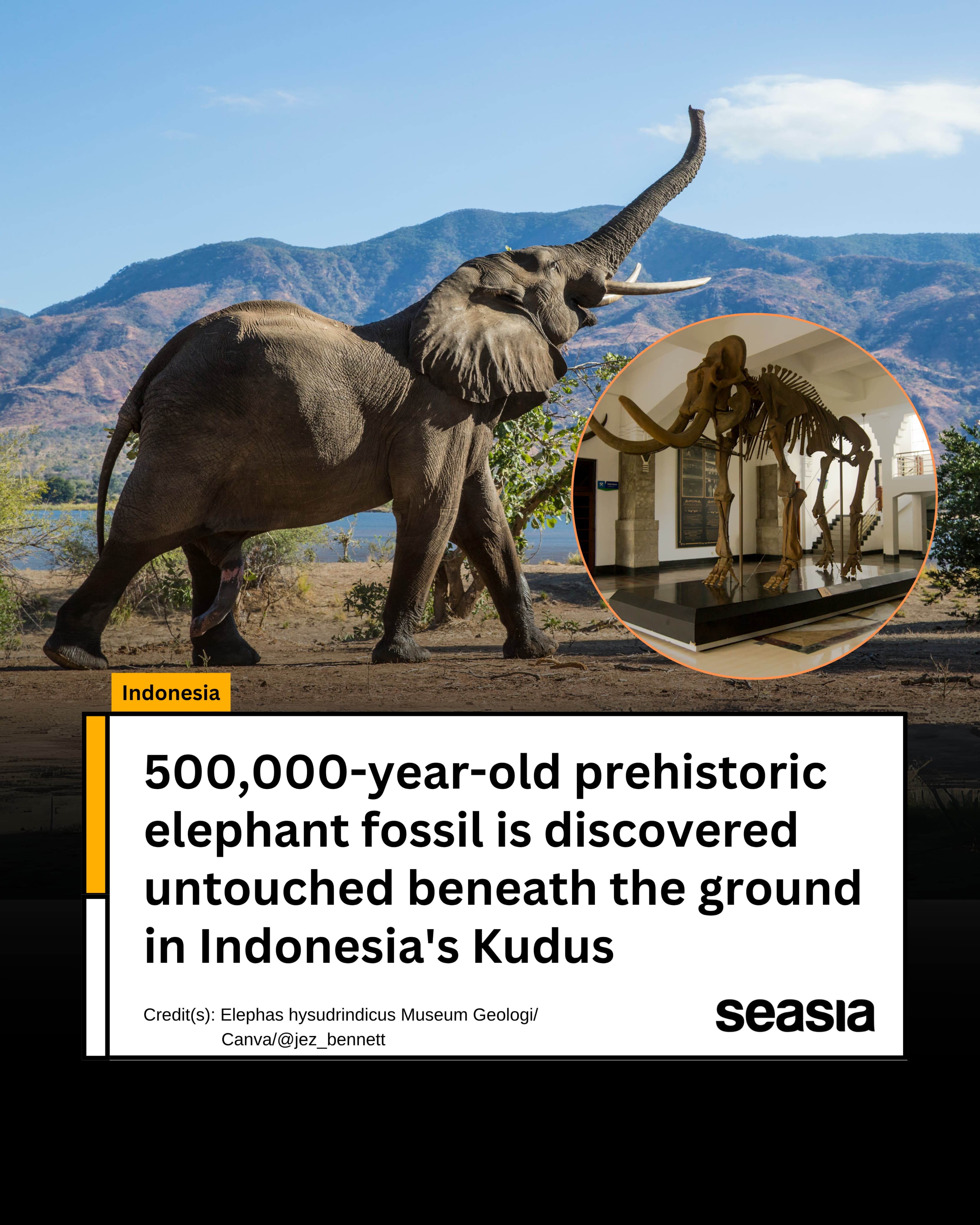Not far from the bustling towns of Central Java, buried beneath the quiet slopes of the Patiayam Mountains, a prehistoric giant has emerged. On June 12, 2025, researchers unearthed an almost complete fossil of Elephas hysudrindicus, an ancient elephant estimated to have lived around 500,000 years ago.
The discovery was made in Terban Village, Kudus Regency, and immediately sparked excitement in Indonesia’s archaeological circles.
This significant find was the result of a collaborative excavation led by the Center for Prehistory and Austronesian Studies (CPAS), alongside researchers from Gadjah Mada University, BRIN, and other heritage institutions. The fossil includes a remarkably preserved set of bones: ribs, scapula, femurs, vertebrae, and even the jaw.

Patiayam: A Forgotten Prehistoric Treasure
The Patiayam Archaeological Site has long held the secrets of Indonesia’s ancient past. Nestled between the regencies of Kudus and Pati, the site sits within the rich fossil-bearing layers of Mount Slumprit and its surrounding areas.
Over the years, archaeologists have cataloged more than 10,000 fossil fragments at this site, yet only a small portion has been exhibited publicly.
This region, often overshadowed by the more famous Sangiran site in Sragen, actually contains fossils dating back between 700,000 to 1 million years. Previous findings include remains of ancient deer, buffalo, tigers, crocodiles, and several extinct elephant species such as Stegodon trigonocephalus and Elephas sp.
With each excavation season, Patiayam continues to reveal its layers of history, offering clues not only about ancient fauna but also about the early humans who once shared the landscape.
The Elephant Fossil and What It Tells Us
The fossil of Elephas hysudrindicus is one of the most complete ever found in the region. According to experts involved in the excavation, the elephant likely lived during the Middle Pleistocene, in a period when Central Java was home to vast plains and rich river systems that supported large herbivores.
What makes this discovery particularly valuable is not just the size or preservation of the fossil, but also its location. The site lies within a relatively undisturbed area that still offers untapped archaeological potential.
Early analysis suggests that this species may have coexisted with Stegodon, another now-extinct elephant species, further deepening the mystery of ancient Java’s biodiversity.
A Future as a Learning Destination
Recognizing the significance of this find, researchers are now taking steps to preserve it while making it accessible to the public. A fossil casting process is underway so that a replica can be placed at the original discovery site. The authentic bones, meanwhile, will be conserved in the Patiayam Museum to ensure their long-term protection.
Beyond scientific interest, this discovery is also expected to enhance local heritage tourism. Plans are in motion to develop the excavation site into an open-air educational zone, complete with information boards and soil layer displays.
This will allow visitors, especially students, to engage directly with the paleontological process and appreciate the natural history of their homeland.
This initiative not only promotes awareness about prehistoric life in Southeast Asia but also encourages sustainable tourism rooted in education and conservation.
Reclaiming Our Past, Inspiring the Future
The ancient elephant unearthed in Kudus is more than a collection of bones, it is a symbol of Indonesia’s immense and often overlooked prehistoric wealth.
Sites like Patiayam offer a living classroom, connecting today’s generation with millennia of natural history.
As Indonesia continues to build its scientific infrastructure and promote cultural heritage, discoveries like this serve as vital reminders that our stories go far beyond modern history. They lie beneath our feet, waiting to be uncovered, preserved, and shared.


















